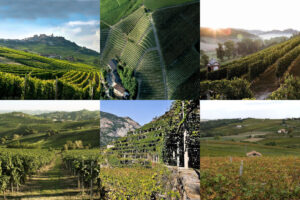To understand the seriousness of the moment that Italian wine is going through, it may be useful to take a step back to 2019, when the wine sector, in addition to having confirmed its world leadership in production with 47.5 million hectoliters, had also regained the record, albeit measured, in volume exports that had reached 21.6 million hectoliters of wine (+10%) compared to 21.4 million in Spain. At the same time, the presence of 48 million hectolitres of stocks brought the availability of the campaign to 95.5 million hectolitres compared to 94.9 million hectolitres of the previous one (54.8 million hectolitres of production and 40 million stocks).
2020 had started with important unknowns. One on all the American duties which, although not immediately, represented a possible threat to the sector (having to be reviewed at the beginning of the summer). To this was added the slowdown of the Chinese economy, which was aggravated by the health crisis that had been emerging since the beginning of the year and, in the European context, the tensions linked to the definition of the Brexit. This was then followed by the global health emergency resulting from the rapid spread of the Coronavirus, with the activation of measures that quickly led to the lockdown of large geographical areas, both in Europe and in the rest of the world. Among the countries concerned, there are several that play a very important role in Italian wine, such as the United Kingdom and the United States. The main reason for this is the sharp drop in demand from Horeca, the main channel for consumption in these countries. Making a very approximate estimate, and taking into account two months of difficulties at the world level, exports could be at risk for almost one billion euros.
Everything will depend on when and at what rate consumption will resume, especially outside the home. While orders and deliveries to major foreign countries were fairly regular in the first few weeks of the crisis, the total shutdown of Horeca has made the situation extremely worrying, especially for the higher-end product, leading to the blocking of some contracts and the non-renewal of others. On the subject of domestic demand, on the other hand, there was a sustained demand - at least until mid-March - from large-scale distribution, which even generated an increase in releases from the cellars. The drop in overall demand, however, is materializing these days and is expected to continue for several weeks.
The increase in demand from large-scale distribution, which is important but still lower than the overall average, will not be able to compensate for the accumulated losses, not so much in volume as in value since medium-high production is the one that finds its greatest place in the ho.re.ca. Channel. The closure of hotels, holiday farms and restaurants, then - besides taking away a natural outlet for national productions - has also canceled a very valid promotional support of products towards Italian and foreign buyers. In this emergency phase, the sector is also facing some logistic difficulties concerning the supply of packaging material. Many glassworks, for example, are in Veneto and Lombardy and work at a reduced pace, as well as some products, such as labels/cartons, need raw materials often coming from abroad with some difficulty. Despite the situation, prices at origin are substantially stable in the first weeks affected by the restrictive decrees. This is mainly because this is a stockable product.
However, it should not be overlooked that a new harvest will begin in August, which, given the current market situation, could prove to be critical for the wineries, whose storage capacity is limited. Therefore, should the situation remain at a stalemate in the coming months, measures to reduce wine stocks could be useful, as well as measures (e.g. green harvesting) to lighten the next harvest. In this regard, it is worth mentioning the request of these days (Alliance of Food Cooperatives and Assodistill) to proceed to a voluntary distillation, to feed the distilleries with alcohol for the production of sanitizers.
Copyright © 2000/2025
Contatti: info@winenews.it
Seguici anche su Twitter: @WineNewsIt
Seguici anche su Facebook: @winenewsit
Questo articolo è tratto dall'archivio di WineNews - Tutti i diritti riservati - Copyright © 2000/2025








































































































































































































